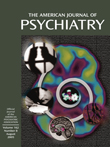Neurological Aspects of Substance Abuse, 2nd ed.
This book is an excellent resource for issues related to substance abuse. It is highly informative and provides answers to the multiple treatment issues that arise on a daily basis in clinical practice. The author has made a huge effort in producing this book, beginning with the basic premise that most biomedical aspects of substance abuse are neurological. Each chapter has an exhaustive reference list. Historical snapshots for each substance of abuse are also provided.
This book compares the effects of substance use in animals and humans. The author uses a scientific approach based on pharmacology and animal studies to address the biomedical aspects of drug abuse, including overdose, withdrawal, medical and neurological complications, fetal effects, and pharmacotherapy. The book provides a fitting historical background related to each substance of abuse, its pharmacology, its neuronal effects, and its actions on various neurotransmitters. Insights are provided into the mechanics of addiction to substances of abuse resulting in the users feeling trapped as drug use becomes an important part of their daily activity.
The book consists of 13 outstanding chapters. Chapter 1 provides an overview of the definitions of dependence, addiction, abuse, and tolerance. The author addresses the triangle of psychic dependence, physical dependence, and social consequences correlated to neurobiological interactions that explain the resulting behavior.
Chapter 2 explores the neurobiology of addiction (new to this edition): “the loss of control over drug use, or the compulsive seeking and taking of drugs despite adverse consequences.” It focuses on sensitization: “enhanced drug responsiveness with repeated exposure to a constant dose.” In this chapter the author reviews animal models, neuroanatomy, neurotransmitters, neuromodulaters, intracellular signaling, and rewards systems to explain behaviors. Chapters 3 to 13 are each dedicated to a single substance of abuse, including opioids, cocaine, anticholinergics, ethanol, and tobacco. Each chapter provides exhaustive knowledge on aspects of the particular substance of abuse such as origin, availability, receptor effects, addiction, withdrawal, fetal effects, organ damage, and treatment. The author also discusses public policy on individual drugs.
The book is very well balanced clinically, it grips the reader, and it is easy to read and understand. It is well written and based on the author’s expert understanding of the field of substance abuse and the related neurobiology. Typographical errors and misspellings are rare, and the editing is of high quality. Overall, the information in this book is well organized, covering issues involving the common substances of abuse as well as the neurobiology of addictions. It is suggested reading for trainees, psychiatrists, and clinicians working in behavioral health. Family physicians, internists, and other physicians would also benefit because substance abuse is a common, often undiagnosed problem.



